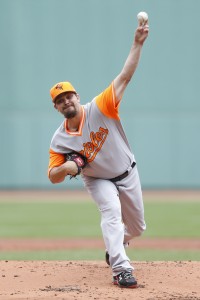Tyler Naquin and Rob Refsnyder are still competing for a potential spot on the Indians’ opening day roster, and Ryan Lewis of the Akron Beacon Journal tweets that manager Terry Francona has explained some details to them. Francona reportedly told the two players that the spot won’t simply go to the guy who gets the most hits over the last week, and that roster construction could be the biggest factor. For instance, if Brandon Guyer and/or Michael Brantley aren’t ready in time for opening day, Naquin and Refsnyder would stand a better chance to make the club out of camp. Whether the club chooses to carry seven or eight relievers will also affect their fates. It’s worth noting that Tyler Naquin has multiple options remaining, while Rob Refsnyder is an out-of-options player.
More out of the midwest…
- In a piece for The Athletic, Doug Gray details ten Reds prospects to keep an eye on for the coming season. The players in the article aren’t necessarily top prospects, but rather a group of under-the-radar players who Gray describes as “unheralded”. The list includes right-handers Nick Hanson and Ryan Hendrix, $10MM shortstop Jose Garcia, and Brandon Phillips’ cousin Montrell Marshall. Many of these players have significant upside and are worth the exploration by any Reds fan, or indeed any avid baseball follower.
- Wade Miley’s opt-out date has been pushed back, Bob Nightengale of USA Today Sports reports on Twitter. The southpaw seemed likely to make the Brewers’ rotation before suffering a torn groin that’s expected to keep him out two to four weeks. Miley could have opted out of his contract tomorrow after being informed that he wouldn’t make the opening day roster, but GM David Stearns apparently worked out a deal with his agent. Miley’s opt-out date has been extended until the point at which he’s able to start pitching again.
- Two-time MVP Miguel Cabrera is stuck in “baseball purgatory”, says Scott Miller in an opinion piece for Bleacher Report. Miller describes Cabrera as “an island unto himself”, on a rebuilding Tigers team that will not likely be able to deal him and the $192MM remaining on his contract, particularly coming off the worst season of his career wherein he was plagued by back issues. For his part, Cabrera doesn’t seem to be focused on that aspect of his situation. “I’m here to play,” he says. “I’m not here to give my opinion of what’s going to happen. I’m here to do my job, to help win games and to help the process.”

